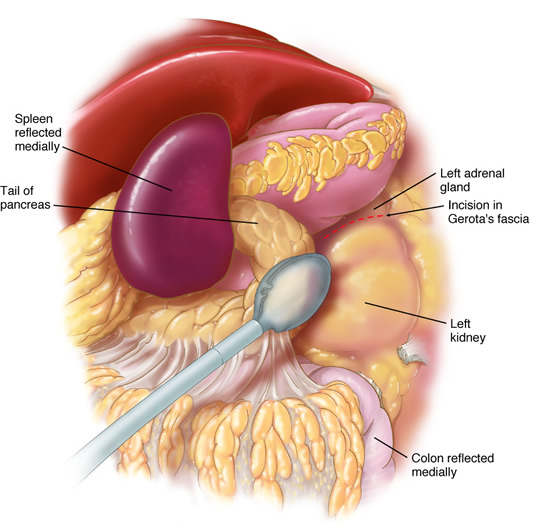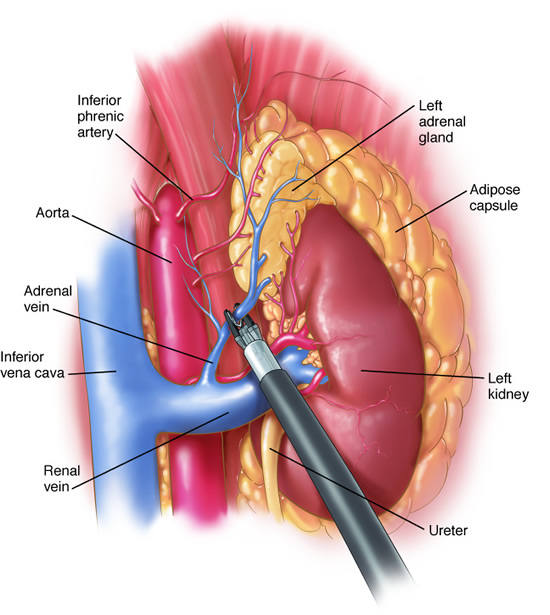Laparoscopic Adrenalectomy
Removal of Adrenal Gland
Adrenal Gland:
The adrenal gland is a small (1-2 inches) triangular organ located atop each kidney. The gland secretes almost 40 different hormones into the bloodstream. Secreted hormones affect everything from adrenaline level and response to stress to how calories are used and stored.
Surgical Candidates:
Adrenal gland removal should be considered for overproduction of a hormone or a tumor.
- Hormone overproduction may occur any of the hormones but the most common is the pheochromocytoma. This involves the increased secretion of epinephrine usually resulting in elevated blood pressure and heart rate.
- Benign tumors that do not secrete hormones but are larger than 3-6 cm require removal. 20% of tumors of this size may have cancer.
Diagnosis:
All patients must undergo biochemical testing. All tumors that secrete hormones must be removed regardless of size. CT and MRI may give evidence of a tumor being benign or malignant.
Surgery:
Laparoscopic adrenalectomy is performed under general anesthesia. 3-4 incisions approximately 1cm each are used to place a camera and 2-3 working ports. The operation is performed in approximately 90 minutes.
Recovery:
Patients recover sooner after laparoscopic adrenalectomy. Return to activities can occur within 1-2 days compared to 4 weeks with an open approach. Pain experienced by the open technique is greater and longer lasting. Wound infections occur less frequently with the laparoscopic technique.
Pertinent References
Chen E, Prinz R. “Minimally Invasive Adrealectomy” in Frantzides CT, Carlson MA, eds Atlas of Minimally Ivasive Surgery, Philadelphia: Sanders-Elsevier, 2009.
Prinz R, Rao R, “Minimally Invasive Endocrine Surgery” in Frantzides CT. ed. “Laparoscopic and Thoracoscopic Surgery” St. Louis Mosby-Yearbook 1995.


